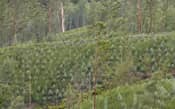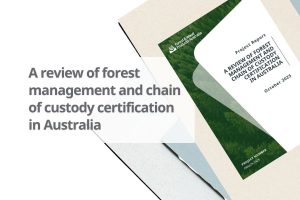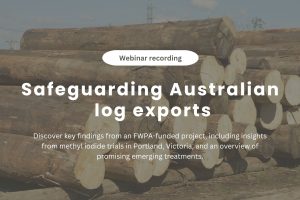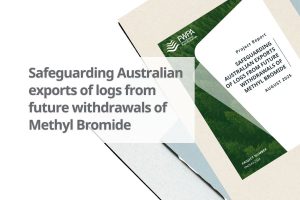Predictive relationships to assist fertiliser use decision-making in eucalypt plantations” (PNC304-1213)
Many hardwood plantations in southern Australia are ready for harvesting and subsequent replanting. However, while previous experience shows that applying appropriate amounts of fertiliser can prevent second rotation trees being less productive than first rotation trees, there is no reliable, cost-effective method to predict how a plantation will respond to fertiliser or when is the best time to apply it.
Researchers from The University of Melbourne, Australian Bluegum Plantations Pty Ltd and Hancock Victorian Plantations, with funding from FWPA, have determined that fertilising a plantation at planting increases the plantation’s final volume (at year 10) by 5.6%, whereas fertilising the plantation mid-rotation increases volume by up to 20.8% at responsive sites. Those plantations that were fertilised at planting and at mid-rotation showed a 10.6% increase in volume relative to control sites.
The research considered data from 49 sites across south-western and south-eastern Australia, with the site measurements being volunteered by a variety of industry collaborators collected over almost 20 years. Twenty-eight sites had fertiliser (containing nitrogen and phosphorus) only applied at planting and age one; 11 sites had fertiliser (nitrogen only) only applied at age 4–5; and 10 sites had fertiliser (containing nitrogen and phosphorus) applied at planting and age one, and nitrogen only fertilizer applied at age 4–5. The sites were also assessed for variations in climatic and site conditions, such as rainfall, evaporation, maximum and minimum temperatures, solar radiation and soil quality.
The research compared predictive models with actual wood volumes from plantation test sites, with the most accurate model to predict growth response (which had a 74% accuracy one year after fertiliser was applied) combining soil mineral and nitrogen analysis, foliar sampling analysis and climate wetness index data (i.e. mean annual rainfall divided by the mean annual evaporation). For only a 4% loss in accuracy, plantation managers could use the ‘best’ soil-based model which combined soil mineral and nitrogen analysis, and mean annual rainfall climate data.
Although such ‘best’ models only predicted short-term growth response (i.e. one year after fertiliser application) with any level of accuracy, without better models being available, they do have significant value, particularly in identifying sites highly unlikely to respond to fertiliser. The research suggests plantation managers use the models as tools to rank sites according to predicted fertiliser response, allowing managers to deploy fertiliser resources to sites more likely to show a significant (i.e. greater than 10%) volume growth response and avoid applying fertiliser where it is not needed.
View report here




